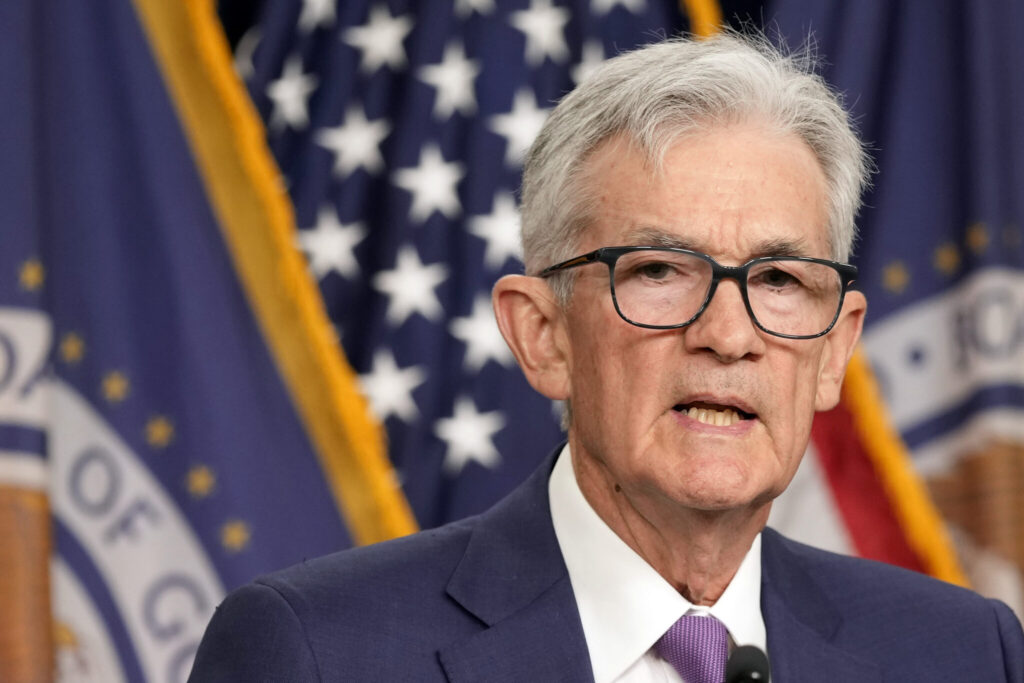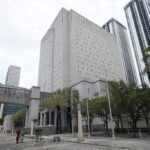The sharp interest rate hikes of the past two years will likely take longer than previously expected to bring down inflation, several Federal Reserve officials have said in recent comments, suggesting there may be few, if any, rate cuts this year.
Quick Read
- Extended Impact of Rate Hikes: Federal Reserve officials believe that the sharp interest rate increases implemented over the past two years may take longer to impact inflation than previously expected, suggesting few if any rate cuts this year.
- Limited Impact on Spending: Higher borrowing costs have not significantly increased Americans’ interest payments as a percentage of income, which means higher rates may not be effectively curbing spending or cooling inflation.
- Possibility of Continued High Rates: Some economists, like Joseph Lupton from J.P. Morgan, suggest that interest rates might need to remain high for an extended period or possibly increase further to effectively manage the economy.
- Fed’s Cautious Approach: Fed Chair Jerome Powell has stated that while a rate increase is unlikely, the Fed needs more time to ensure inflation is moving towards its 2% target, indicating a cautious approach to any potential rate cuts.
- Impact of Refinanced Mortgages: Many Americans have not felt the impact of higher rates due to refinancing their mortgages at low rates in the past, which has kept their borrowing costs low despite rate hikes.
- Corporate Borrowing Costs: Like individual homeowners, many large corporations have also locked in low borrowing rates before the rate hikes, lessening the immediate impact of increased costs.
- Potential Long-Term Effects: Higher interest rates may eventually lead to more financial strain for consumers and businesses as low-rate loans mature and borrowing costs increase, potentially impacting the housing market and overall economy more significantly over time.
The Associated Press has the story:
Are US interest rates high enough to beat inflation? The Fed will take its time to find out
Newslooks- WASHINGTON (AP) —
The sharp interest rate hikes of the past two years will likely take longer than previously expected to bring down inflation, several Federal Reserve officials have said in recent comments, suggesting there may be few, if any, rate cuts this year.
A major concern expressed by both Fed policymakers and some economists is that higher borrowing costs aren’t having as much of an impact as economics textbooks would suggest. Americans as a whole, for example, aren’t spending much more of their incomes on interest payments than they were a few years ago, according to government data, despite the Fed’s sharp rate increases. That means higher rates may not be doing much to limit many Americans’ spending, or cool inflation.
“What you have right now is a situation where these high rates aren’t generating more braking power on the economy,” said Joseph Lupton, global economist at J.P. Morgan. “That would suggest that they either need to stay high for longer or maybe even higher for longer, meaning rate hikes might come into the conversation.”
Fed Chair Jerome Powell said at a press conference earlier this month that an interest rate increase was “unlikely,” but he did not fully rule it out. Powell emphasized, however, that the Fed needed to take more time to gain “greater confidence” that inflation is actually returning to the Fed’s 2% target.
“I think the Fed’s telling you hikes are not quite as on the table as the market was expecting,” said Gennadiy Goldberg, an economist at TD Securities.
On Friday, Dallas Federal Reserve President Lorie Logan said that it is “just too early to think” about cutting rates, according to news reports. She also suggested that it is unclear whether the Fed’s rate is high enough to quell inflation. Logan is one of the 19 officials on the Fed’s interest-rate setting committee, though she does not vote on rates this year.
Higher-for-longer borrowing costs are sure to disappoint many, from Americans hoping for lower mortgage rates before buying a home, to Wall Street traders eagerly awaiting a cut, to President Joe Biden, whose reelection campaign would likely benefit from lower rates.
On Wednesday, the government will release April’s inflation report, and economists forecast it will show inflation declined slightly to 3.4%, from 3.5% in March. It has climbed from 3.1% in January, however, after falling sharply last year, raising concerns about whether progress in reducing inflation has stalled.
The Fed has pushed its key rate to a 23-year high of 5.3% in an effort to bring down inflation, which peaked at 9.1% in June 2022.
Yet despite those sharp increases, Americans, on average, spent just 9.8% of their after-tax income paying interest and principal on their debts in last year’s fourth quarter. Two years earlier — before the Fed hiked rates — they spent 9.5%, a historically low percentage.
Why hasn’t the figure risen by more? Millions of American homeowners refinanced their mortgages at very low rates during the past decade and a half when the Fed mostly kept its key rate at nearly zero to bolster the economy. As a result, their mortgages remain low and their finances largely unaffected by the Fed’s policies. Consumers who paid off their cars, or who took out low-rate five-year car loans before rates rose, have also felt little impact.
The average rate for a new 30-year mortgage is nearly 7.1%, according to mortgage giant Freddie Mac. But Goldberg calculates that the average rate on all outstanding mortgages is just 3.8%, not much higher than 3.3% when the Fed began to hike rates. The gap between new rates and the average outstanding is the highest since the 1980s.
“One of the things we hear is that maybe because so many Americans refinanced their mortgages when mortgage rates dropped during the pandemic … people are not feeling the bite of higher mortgage rates yet,” Neel Kashkari, president of the Federal Reserve’s Minneapolis branch, said last week. “If that’s true, and I think there’s some truth to that, then it may take longer” for the Fed’s rate hikes “to be fully felt by the housing market and by the economy more broadly.”
Many large corporations also locked in low rates before the Fed began hiking, further limiting the impact of higher borrowing costs.
“I think the most likely scenario is where we are right now, which is just we stay put for an extended period of time,” Kashkari said, referring to the Fed’s key rate.
There are signs that higher rates are causing more financial struggles for many Americans, as delinquencies on credit cards and auto loans rise. And many younger Americans are becoming increasingly concerned that, with mortgage costs so high, they will not be able to afford a home.
Yet delinquencies are climbing from very low levels and are not yet historically high. Pandemic-era stimulus checks and rising incomes allowed many people to pay down debt in the past few years.
And Americans, in total, are carrying much less debt as a percentage of their incomes than they did during the housing bubble 15 years ago, Lupton notes.
“With consumers and businesses alike sheltered from higher interest rates thanks to pandemic-era debt paydowns and refinancing, their aggregate interest burden is not yet historically elevated,” Tom Barkin, president of the Richmond Federal Reserve, said in recent comments. “To me, that suggests the full impact of higher rates is yet to come.”
Goldberg said that greater borrowing costs will eventually start to bite as more Americans throw in the towel and purchase homes, even with higher mortgage rates. In some cases, they may move for a new job or have family changes that require a move. And more companies, over time, will have to borrow at higher rates as well, as their low-interest loans mature.
“The longer we stay here, the more people can’t wait,” Goldberg said. “If the Fed can wait out consumers, that would be one way that higher for longer actually translates to Main Street.”







